The difference between reels is often a confusing subject for anglers — especially those who are new to the sport — but that does not need to be the case. Reels are pretty simple devices and they play a major role in your fishing success. A good place to start is by familiarizing yourself with the basic purpose of, and differences between the four basic types of fishing reels.
What Is a Fishing Reel?
A fishing reel is a mechanical device designed to store, release, and collect fishing line through the use of a rotating arm. First developed in the 4th century, they are now standard equipment for most anglers.
The Invention of Fishing Reels
Before the advent of the reel, anglers did not have an easy way to fish from a long distance. You could only access the water in your immediate vicinity, as the line was simply tied onto the end of a rod. This made it difficult to catch wary species who were easily spooked and it meant that some parts of the water were effectively out of reach.
Additionally, it was difficult to play fish as efficiently which led to many lost fish. However, by using a reel, anglers can cast their baits and lures at considerable distances using a variety of casting techniques. Many freshwater fishers routinely sling lures 40 yards or more, and some saltwater anglers can cast 200 yards, thanks in part to the long rods that are commonly used to fish from the beach.
Using a modern reel, you can keep the line taught and control the lure very efficiently once you have cast it to the desired area
Types of Fishing Reels
Most modern anglers use one of four different reel types: spinning, spincast, baitcasting, or fly. While you can always use whichever style you prefer, each offers its combination of strengths and weaknesses in a given set of circumstances.
Note that there are more reel types than the four detailed here, such as trolling reels and a few others, but they are not used as commonly by modern freshwater anglers.
1. Spinning Reel
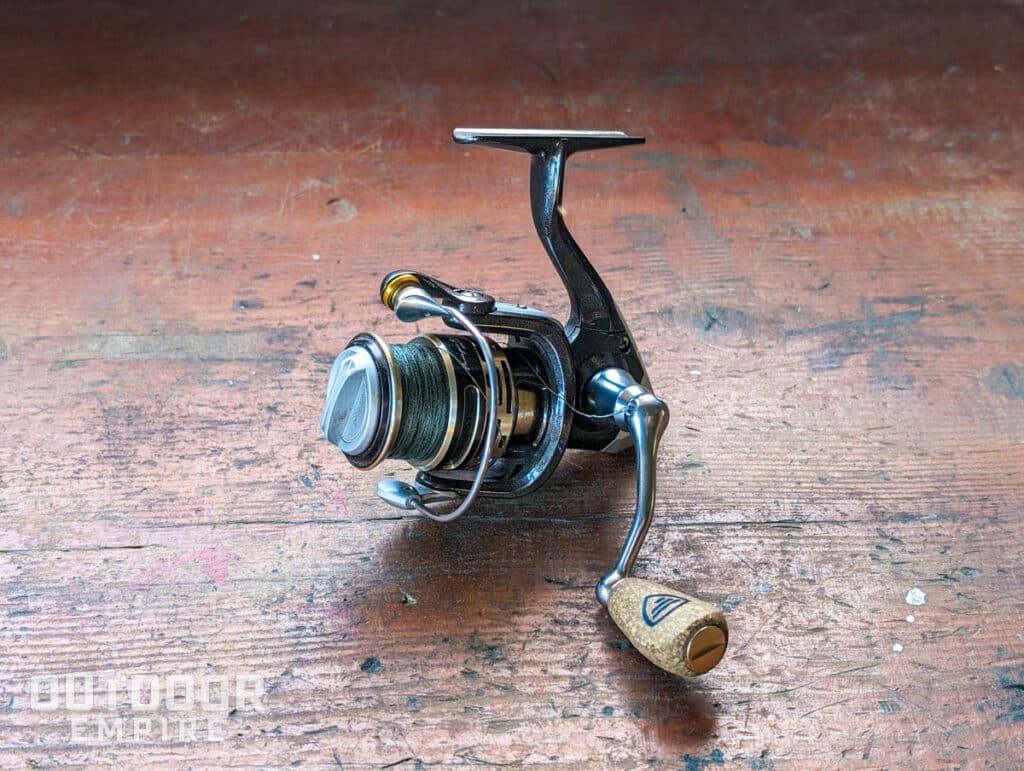
Spinning reels feature a spool that sits parallel to the main axis of the rod. They are designed to hang beneath the rod when in use, unlike most other reels which are designed to rest on top of the rod during use.
The line wraps around the spool and passes over a small wheel called the power roller before continuing up through the rod guides. A metal arm called the bail keeps the line in place and ensures that it passes over the power roller. Like most other reels, the spool of a spinning reel rotates as the handle is turned when reeling in line.
And like modern baitcasting and spincast reels, spinning reels are called multiplier reels. This means that a single revolution of the handle causes the spool to rotate more than one time.
How To Use a Spinning Reel
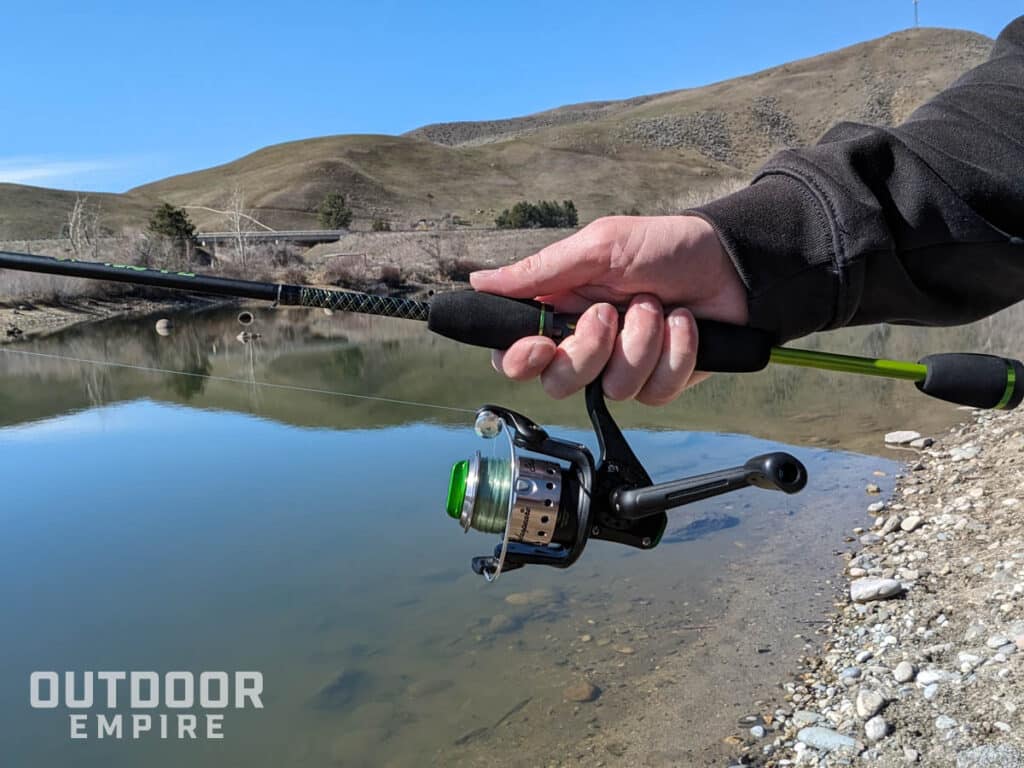
To cast with a spinning reel, you must first move the bail arm into the up position — this is often called “opening the bail.” This frees the line and allows it to unspool (the spool of a spinning reel does not spin during casting) so you need to keep the line taught by pulling the line with your first finger while you prepare to cast.
Maintain the pressure on the line during your backswing and only release it at the very end of your casting motion. You can usually adjust the drag — the amount of resistance the reel applies to the line — of a spinning reel via a dial on the front of the spool.
Common Challenges and How To Address Them
The most common problem anglers experience when using spinning reels is a twisted line. When this happens, you need to unspool many yards of line so that it lies flat, then rewind the line on the spool slowly and carefully in order to ensure it goes on smoothly.
A proper line-spooling technique will help limit line twist but you can also prevent it by using a swivel on the end of your line.
2. Spincast Reel
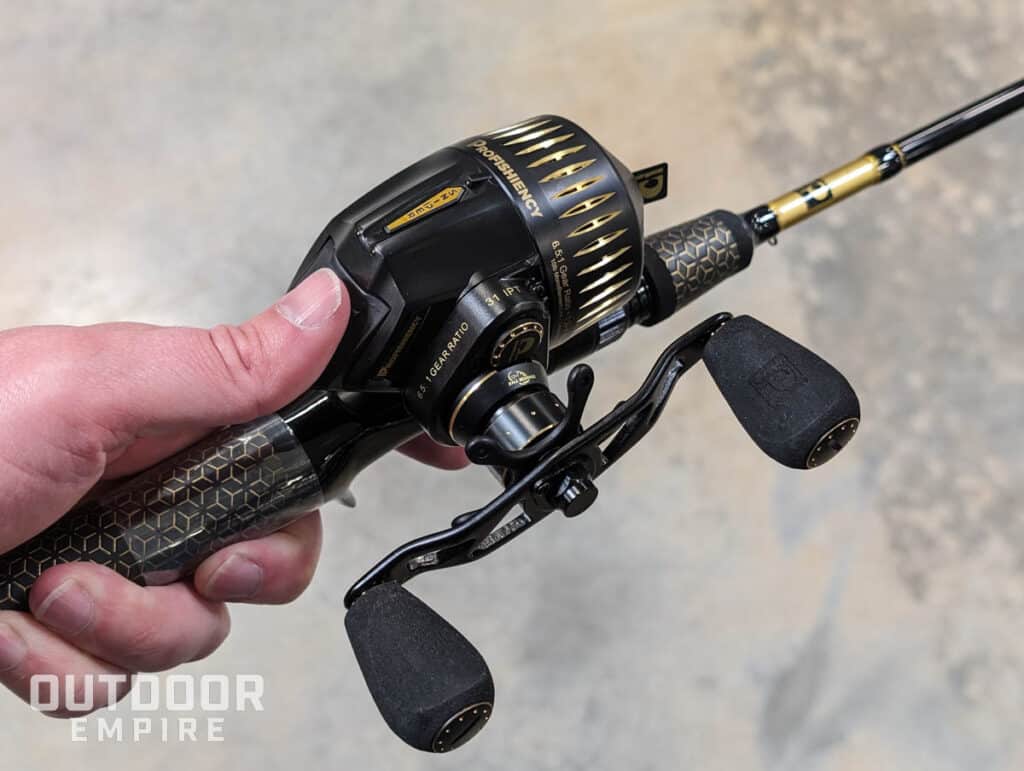
Spincast reels are not as popular as they once were but they still provide great value for some fishing applications and anglers. They are essentially spinning reels that are fitted with a plastic cover. The line emerges from a small hole at the front of the reel.
How To Use a Spincast Reel
Like spinning reels, spincast reels feature a spool that is parallel to the rod axis. Also, they do not rotate during the cast. Instead, the line simply unspools as the weight of the lure pulls it free.
However, unlike spinning reels which require the angler to hold the line in place during the cast, spincast reels are easier to use. When it is time to cast, a button on the reel is pressed which allows the line to unspool freely.
Because the line is covered by a plastic housing, spincast reels do not become tangled as easily as spinning reels do. This means that you will experience fewer technical problems when using a spincast reel. The ease of use is partly why they are often the best option for children and beginning anglers of all ages.
Common Challenges and How To Address Them
Quality spincast reels rarely malfunction but they can suffer from the same types of line-twisting problems that spinning reels do.
3. Baitcasting Reel
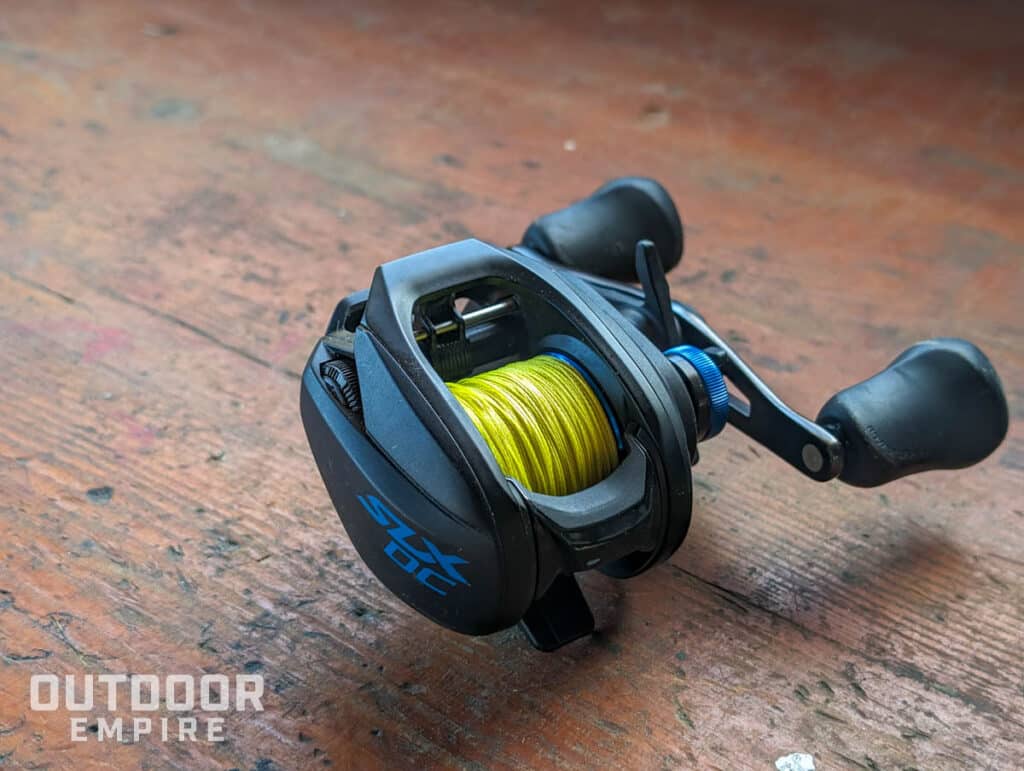
Baitcasting reels are different from spinning and spincast reels in several important ways.
Instead of the spool being parallel with the rod’s axis, they are mounted so that the spool sits perpendicularly to the rod. They also rest on top of the rod while in use, as spincast reels do.
How To Use a Baitcasting Reel
There is another important difference between baitcasting reels and those discussed previously. The spool of a baitcasting reel spins during casts. This means that you have to use a lure heavy enough to pull the line free.
It also means you have to adjust it properly and use a bit of skill to ensure it stops spinning when the lure hits the water. Otherwise, the reel continues to turn which can cause huge backlashes that can be difficult to untangle.
However, the free-spinning nature of a baitcasting reel also means that you have better control over your casting accuracy — especially regarding distance. If you like, you can simply stop the reel from spinning with your thumb which causes the lure to fall straight into the water. This is often helpful when trying to target small, isolated areas of cover.
The spool on most baitcasting reels is also smaller than the spools used in other types of reels. You can usually collect line more quickly, and with fewer turns of the handle, while using a baitcasting rod than you can with a spinning or spincast rod. This is particularly useful when using lures designed to be retrieved quickly such as spinnerbaits or crankbaits.
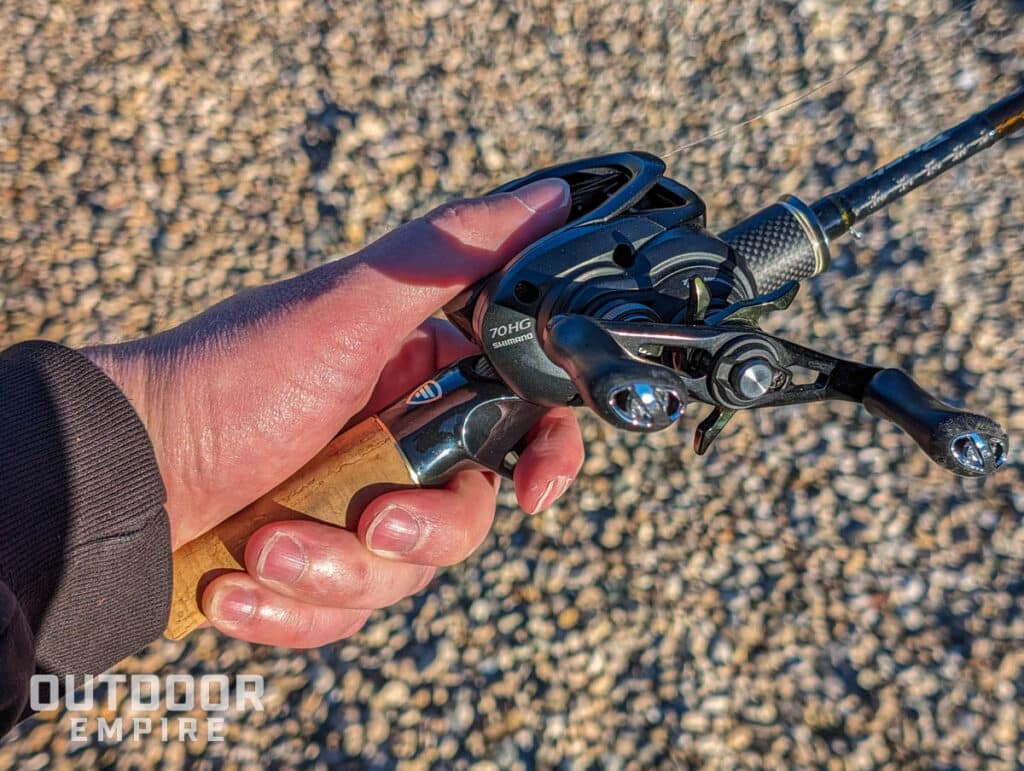
Common Challenges and How To Address Them
As with many reel types, baitcasting reels can be prone to tangles. In particular, fishers who use this reel type may commonly experience “backlash.” This refers to a circumstance where the spool spins faster than the line can release, causing tangling and knotting. Largely these problems can be addressed by ensuring that your spool components are kept in good condition and by practicing proper casting techniques. However, backlash can also be caused by issues such as poor wind conditions.
4. Fly Fishing Reels
Fly reels function quite differently compared to the other main types of fishing reels. Rather than relying on the weight of the bait or lure to cast the line, like a spinning or baitcasting reel, fly fishing reels rely on the weight of the fly line. They are often made with precisely machined, high-quality components and can be quite expensive. Fly fishing reels are commonly used for freshwater fishing, however, there are also fly fishing reels that are made specifically for saltwater use.
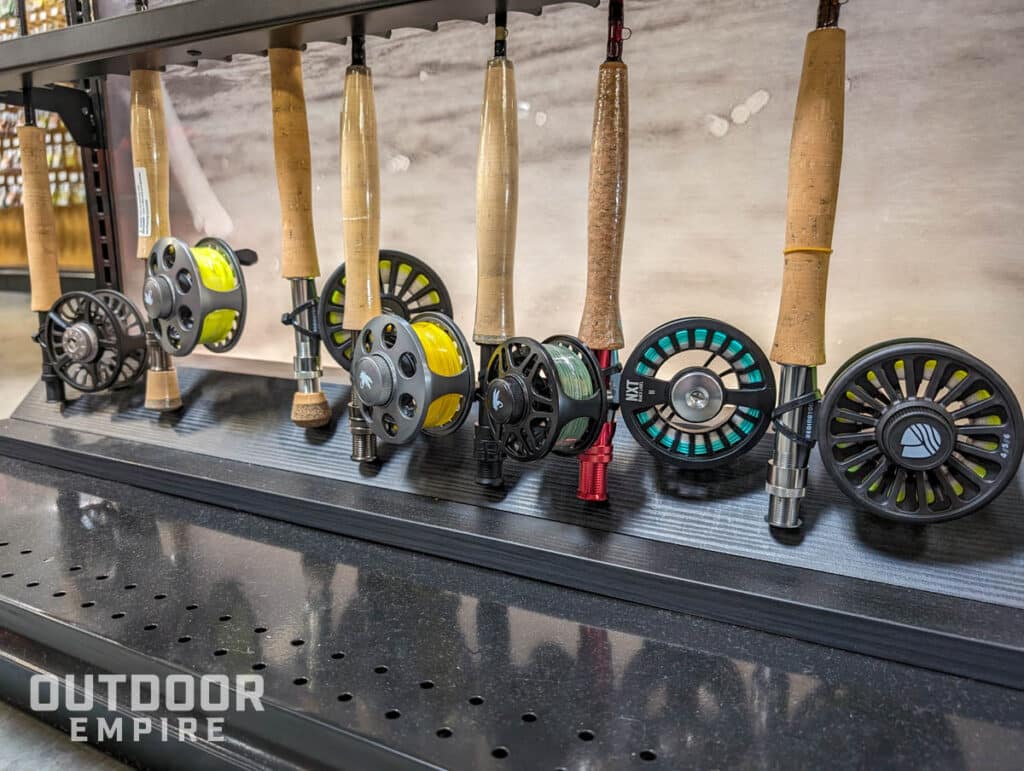
How To Use Fly Fishing Reels
Fly fishing reels are very simplistic compared to many other reel types, and accordingly, they are fairly easy to use. However, fly fishing itself requires a lot of technique and finesse which can make this type of fishing more challenging than other types of fishing.
Fly fishing reels are “single-action,” which means that the spool rotates once with every turn of the handle. These reels also feature a variety of drag systems that anglers utilize to tire out a fish on the line.
Common Challenges and How To Address Them
One of the most common mistakes that fly fishers make is starting out with too much slack in the line. This may result in tangling and lack of proper leverage when playing a fish. These issues can be addressed with proper casting technique, as well as starting with the tip of your rod close to the water and slowly lifting it.
Which Type of Reel Is Best for You?
None of these reel types are inherently better than the others. But they each excel in different situations, thanks to the differences inherent in their designs. And while there are no unbreakable rules for angling and you can use whichever style you prefer, some are undoubtedly better suited for some circumstances than others.
| Reel Type | How it Differs from other Reels | Advantages | Disadvantages |
|---|---|---|---|
| Spinning | – hangs beneath the rod – line wraps around the moving spool and goes through roller before continuing to rod | + easy to cast + no backlash + works well with light lines and lures | – line twist |
| Spincast | – a button on the reel is pressed which allows the line to unspool freely | + easy to use + no backlash + no line twist | – low line capacity – has the tendency to tear up line – not durable |
| Baitcast | – spool sits perpendicularly to the rod – spool of a baitcasting reel spins during casts | + can handle heavier fishing line + strong drag system + made for heavier fishing lines and lures | – difficult to cast – backlashes occur often – does work well with light lures |
| Fly | – mounts on end of fly rod behind grip – one turn = one rotation – only works with fly line | + simple design + low risk of line tangle + highly resistant to corrosion | – reel is less involved in fishing process, more skill required to fly fish |
Questions To Ask Yourself
To determine what type of reel is best for you, it can be helpful to ask yourself some basic questions about your particular needs and preferences when it comes to fishing.
Do you want to use light or heavy line and tackle? Generally speaking, baitcasting reels are better suited for heavy lines and lures than spinning or spincast reels are. Definitions of “light” and “heavy” vary from angler to angler, but a reasonable boundary would be somewhere in the 10-pound-test line or ¼-ounce lure range. If your line or lures are heavier than this, a baitcasting reel is probably the best choice for you. If you like lighter tackle than this, opt for a spinning or spincast reel.
How much experience do you have fishing? If you are completely new to fishing, you probably have the most success by using a spincast reel but anglers with a bit more experience may find a spinning reel preferable. Experienced anglers who are willing to put in the additional time necessary to learn to use a baitcasting reel often find them to be well worth the effort.
Are you primarily using “power” or “finesse” techniques? If you like to burn crankbaits and spinnerbaits through the water or use other “power” fishing techniques, you’ll likely find a baitcasting reel the best option. Finesse-oriented anglers, on the other hand, who often choose lighter lines and smaller lures usually have better success by using a spinning reel.
Are you actively fishing or will you leave the rod in a holder for extended periods of time? Most anglers — particularly those targeting bass or trout — fish actively, meaning they keep the rod in their hand the entire time. But many anglers targeting carp, bluegill, or catfish leave their rod in a holder while they sit back and relax. Such anglers likely find that the simplicity of a spinning reel suits their needs better and present fewer technical problems than a baitcasting reel.
How big are the fish you are targeting? The size of the species you intend to catch will impact things such as the size and type of reel you need. For example, if you are trying to catch panfish, crappie, or trout, you need to use light line and tackle so you may want to use spinning or spincast equipment. But if you are chasing after muskies and double-digit bass, you may find it easier to haul in the fish with a baitcasting reel.
NOTE: The original article was written by Ben Team in 2017, but the article was entirely revised by Chase Fly in 2024.

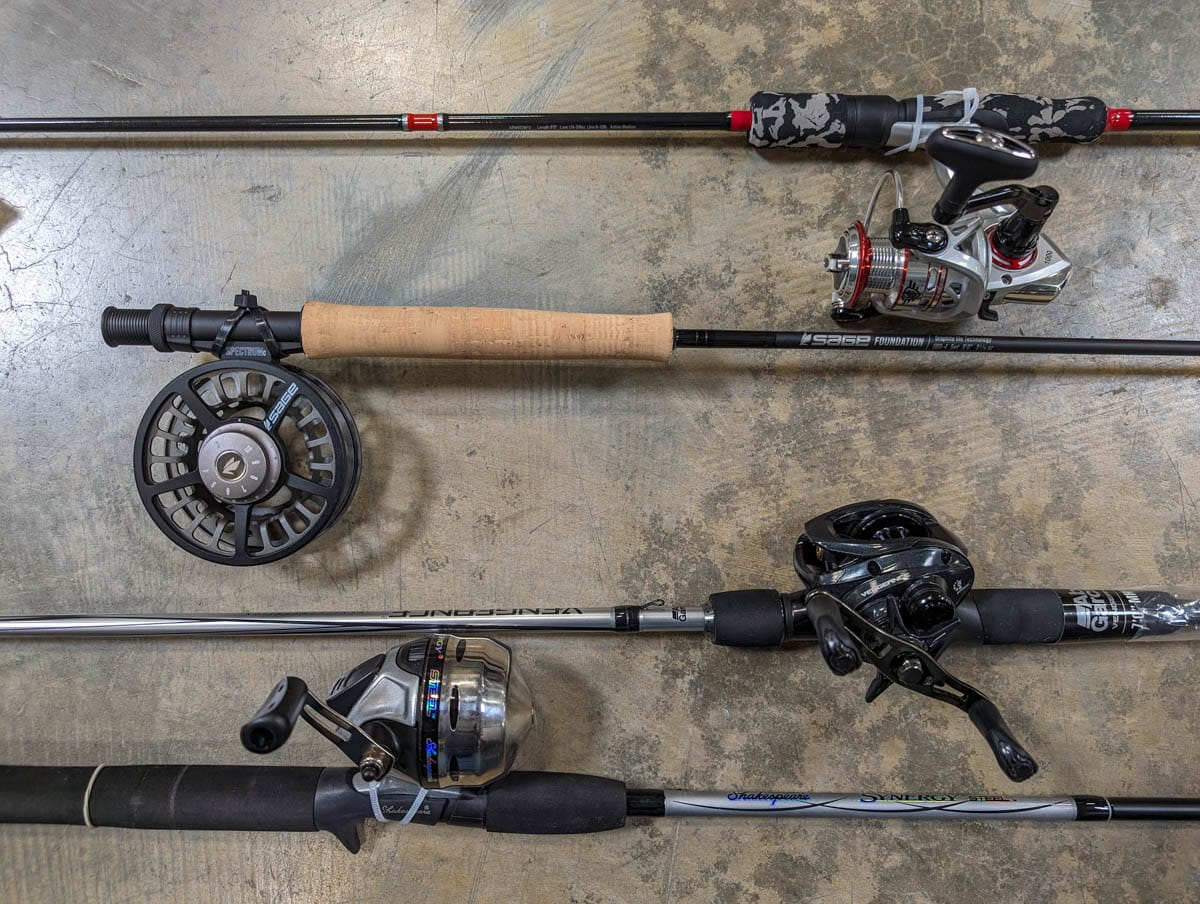
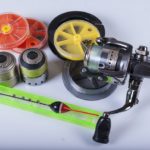
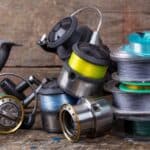
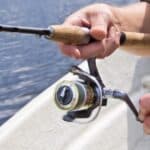
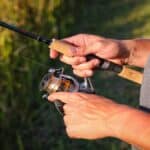
Comments are closed.